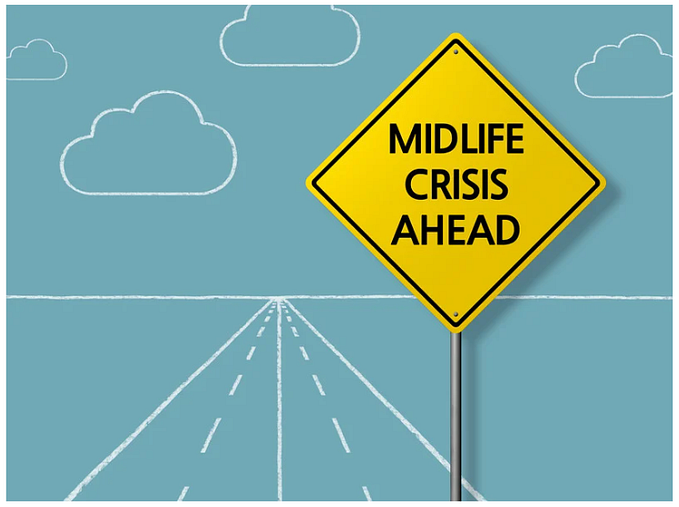
Crafting the Brand Message in Out-of-Box Experiences
As digital designers, we tend to think that our role ends at the e commerce’s purchase confirmation screen and often forget to verify whether the physical experience that follows is being used to tell consumers a single, consistent brand story.
You buy a new iPhone.
You leave the store and go home, very excited. All you want to do is open the box and start using that new piece of jewelry right away. When you pull up the box lid, a surprising fact: it won’t open immediately.
“You pull up the lid, but it won’t open right away. It slides. Slowly. It takes 2 or 3 seconds for it to completely slide out of the box and to finally reveal your new iPhone. If you pull up too quickly, it clogs. You must wait until it gently slides. Those 3 seconds are not yours. Sit down, relax. Who owns those 3 seconds is Apple, not yourself.” — describes a friend who has bought a new iPhone recently.
There have been videos made, celebrating the moment.
If you have no idea what I’m referring to, pleas watch the first fifteen seconds of this vide
When the lid finally opens, your iPhone is sitting there, waiting for you.
- It’s been pre-charged. Consumers wouldn’t be super happy if forced to wait for the phone to fully charge before being able to use it.
- No need for an instruction manual. The initial setup process is easy enough for users with different tech-savviness levels.
- All accessories are hidden underneath the phone. The iPhone takes the leading role in the unboxing experience: it is the first thing you see when you are finally done opening the box.
Unique, unexpected, delightful.
Similarly, when you buy a Kindle from Amazon, the device is already set up with your amazon.com account and all the digital books that you own in it. A thoughtful onboarding experience that not only creates a pleasant surprise for users but, in the long term, avoids the issue of duplicate accounts.
Now check out this IxDA Awards-winning project, created by Vitamins Design for Samsung.

Samsung has hired Vitamins Design to create a simplified smartphone onboarding experience for its senior users.
Rather than designing a dumbed down version of the phone, they’ve decided to take a different approach. They found out through research that those users were actually willing to use all of the phone’s functionalities.
“Maybe existing phones don’t need to be changed, maybe we should change the way we learn how to configure and use them instead.”
The result was a streamlined, gradual approach to the onboarding experience:
Older users are not less intelligent or less motivated than younger users. They simply don’t have the same familiarity level with that type of product. They have not been born in that reality; they needed to adapt along the way.
Want to run a quick test? Try having an 18- and a 50-year-old person open the package of a new electronic device. You’ll notice that the older person will likely put the equipment aside for a moment and check out the instructions manual to make sure they are following the setup process correctly when turning on the device. The younger user, on the other hand, will put the manual aside and jump straight to the power button. They know they can handle it.
Those are two distinct worlds. And you are often hired to design out-of-box experiences that will work for both at the same time.
Other great examples include the renowned smart thermostat Nest and the stylish Wabby Parker and Zappos packaging. Their unique first-use experiences help reinforce the premium aspect of the product and naturally justify the extra dollars you paid for.

But why should I care?
As pretty much all other challenges in the User Experience Designer’s work, the out-of-box experience is a matter of balancing the brand’s business goals and the user’s personal goals when they peel off the seal and finally put their hands into the product.
In the short iPhone story described before, the user’s goals are a bit obvious: using the phone as soon as possible, learning how to turn it on and use its basic functions, customizing its settings, making the first phone call, sending the first SMS to friends to tell them the news — and the list goes on. You’ll notice that the user’s goals are pretty similar across a given product category (iPhone users have similar goals as Samsung and Motorola users).
The brand’s goals may vary more often. The out-of-box experience can also be used to express the brand values and tone of voice in a more tangible way. Like the 3 sliding-lid seconds from the iPhone box that create a unique moment for its consumers. Other aspects that join the mix: the packaging design, the arrangement of objects in the box, the instructions manual and the software onboarding experience itself. All these factors, combined in a smart way, can help create a positive and remarkable experience for users and encourage them to recommend the product to their friends.

The packaging design itself can be crucial during the purchase decision moment. In retail spaces, packagings communicate the product personality even before purchase. Not advertising. Not the product usability.
This article from Retail World nicely organizes the principles of a good packaging design in 6 groups:
- Simplicity. It’s a rare person who enjoys being in a supermarket–it’s often cold, crowded, and visually stressful. So any brand that keeps its message simple, without bombarding us with proclamations, may entice us to reach for it. Supermarket brands can learn from premium food companies such as Simon Johnson, which strips its narrative down to the essentials, creating calm on the shelf. Visually quieting the noise with a simple design is one way to help your product stand out.
- Honesty. No one actually believes that all olive oil comes from some idyllic Tuscan farm, or that a loaf of bread is hand-kneaded by a German baker, despite what the packaging tells us. We all suspend our disbelief, knowing deep down that we are being “spun.” A brand such as Another Bloody Water, however, speaks in a way that grabs our attention. The brand rises above the spin by giving its audience credit for being in on the joke, which instantly disarms us and makes us feel wiser for buying in. In a largely hyped-up or even dishonest environment truth can be revolutionary.
- Personality. Packaging with a unique personality isn’t just nice to have, it’s essential. It’s the fundamental difference between brand and private label, between emotion and function. Personality has the potential to show what’s unique about a brand, and yet this critical aspect is often ignored. Legibility, shelf shout, and flavour differentiation take precedence, leaving us with an overwhelming amount of boring messages. An unexpected feature–a clever twist in the logo or a little wit in the back-of-pack information–can change the way we relate to not only the product but also the brand. Handled creatively, personality can make it possible to actually like the “person” that is a particular brand.
- Practicality. Who hasn’t been driven to the point of bad manners and near physical exhaustion with a stubborn blister pack? Or cursed aloud as a bag of rice grains exploded across the kitchen floor? Structural packaging that drives the user to frustration doesn’t exactly encourage repurchase or foster long-standing loyalty. On the other hand, innovations like pump spray balsamic vinegar bottles, ziplock resealable bags, and screw-cap wine bottles that demonstrate an understanding of our day-to-day experiences with a product often provide a tangible reason to appreciate the brand.
- Sustainability. In the current environmentally conscious climate we feel guilty about throwing away a plastic bottle and recognise wastefulness when removing the third layer of wrapping from a new kitchen appliance. We welcome recyclable materials such as glass and paper, and are happy to have less material waste to throw in the bin. Refillable packaging is another way to reduce the amount of waste we produce. Reusable laundry liquid bottles and rice container refills provide a new sense of efficiency. In times past we left our milk bottles out for collection. Reuse is not exactly a new idea–it’s simply an old method with new values. Additionally, refillable packaging is not only efficient, it also maintains a visible brand presence in the pantry at home. Sustainable packaging provides a sense of satisfaction that comes from acting responsibly through our purchasing decisions.
- Authenticity. New products and brands enter the market at a dizzying rate. Finding brands that have stayed true over time or remind us of lasting quality create a level of comfort and reassurance. Of course, well-established brands can draw on their heritage to deliver authenticity–brands like Coca-Cola with its familiar red-and-white logotype or Tiffany’s classic blue boxes. But authenticity can be true of modern brands as well. Aesop’s signature tinted brown bottles and a consistent two-colour aesthetic reflect its beautiful products. Brands that maintain integrity can foster a genuine feeling of value.
But I’m not a packaging designer, so why should I care?
You’re right. If you are reading this, you’re probably not a packaging designer. But you’re very likely a User Experience Designer.
Going back to the iPhone story for a moment: the iPhone purchase experience does not end on apple.com’s purchase confirmation screen.
The experience actually extends across multiple channels, sometimes created and designed by different companies. But the consumer experience is a single story. And it follows a path that might be longer than you think: from Apple’s Keynote event when the phone is announced, to memorable TV ads that demonstrate the wonderful things the product will empower you to do, to the website homepage, to the online purchase flow, to the physical store, to the purchase confirmation email, to the invoice, to the product packaging. To the 3 seconds that feel like magic.
The process of opening the box is often one of the most remarkable moments in the consumer relationship with the brand. It’s the moment of truth, that consummates that relationship and extends it through months, sometimes years. If ads are the vows of love, the out-of-box experience is the sex of UX.
If you are interested in the topic I recommend that you flip through the presentation below, created by Harry Brignull and Pete Gale (90percentofeverything). It brings up many other examples of good and bad practices from out-of-box UX — as well as backstage insights from the process of creating a user-centered packaging.
Written by @fabriciot.







